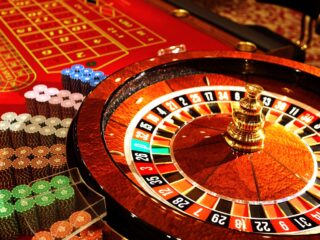
Source: https://unsplash.com/photos/a-garden-filled-with-lots-of-different-types-of-flowers-MJwb8dEQmr0
Your patio and lawn are one of your house’s most striking features. Homeowners often neglect their landscape to favor their interior, which is a big mistake. Maintaining your landscape can improve your curb appeal, which increases your house’s value and will give you more money if you ever decide to sell it.
It also creates a good impression of your house on any guests and passersby, as your landscape is the first thing most people will notice about your house. There are two main elements to your landscape: softscape and hardscape. Maintaining both is essential to improving your curb appeal. Let’s discuss both elements in detail:
Softscape
Your softscape refers to the living portion of your lawn, such as trees, flowers, and bushes. They include:
-
Plants and Trees
Your plants and trees are the base of your softscape. When getting your plants, ensure they match the climate and soil type or will not grow as expected. The USDA Hardiness Zone is a good start for deciding which plants are suitable for your climate. Also, prioritize biodiversity for a good landscape and get plants of different species, sizes, and colors. A diverse landscape is also more resilient to pests.
-
Lawns and Groundcovers
Groundcover provides landscape with its characteristic look, so invest good thought into it. You can choose between cool-season or warm-season grasses or groundcover plants that reduce soil erosion, such as clover and sedum. We’d recommend ditching monoculture grass for a mix of low-growing wildflowers, like white clover. Ensure proper maintenance by mowing your lawn regularly to keep it around 2 to 3 inches. Make sure not to mow it during spring (April-May), so as not to disturb pollinators. Water it frequently, around 1 inch every week. If you apply fertilizer, check your soil often and avoid over-fertilizing.
-
Flowers and Shrubs
Flowers and shrubs will add color and fragrance to your garden, but do this smartly: choose a mix of colors that bloom through the growing season and ensure your flower colors contrast with each other. Select plants that bloom at different times to ensure color in your landscape at all times. Combine textures as well to clear sharp contrast, such as by pairing fine-textured ferns with large-leafed plants.
Hardscape
The hardscape refers to the non-living part of your curb. Key elements in your hardscape include:
-
Patios and Decks
A good patio and deck can add significant personality to your landscape, but consider your curb’s primary function. Your layout and furniture placement will be based on your purpose – entertaining guests, dining, or relaxing. Choose a place with a suitable balance of sunlight and shade. Stone, concrete, and wood are all commonly used materials for your patio – if you live in Virginia, a Hampton Roads hardscape supplier can help you decide what the appropriate materials for your patio can be.
-
Walkways and Pathways
Well-defined walkways brighten up your garden and make the morning jogs and evening strolls more fun. Map out your primary and secondary routes, consider the flow of movement, and ensure paths connect the key areas like your door or the patio. Use curves and blends for a natural look. Remember to match your path materials and design with the rest of your hardscape for a consistent and neat look.
-
Fences and Walls
Fences and walls improve curb appeal while providing privacy and security. Picket, wrought iron, or lattice fences also add charm to your property and define boundaries without blocking views. Although they may add a rigid look to your outdoors, you can use climbing vines and hedges to soften the appearance and blend the structure in your overall garden.
Endnote
Your outdoors add personality to your house, elevate your standard of living, and improve your house’s resale value. Designing a good curb consists of investing in both the softscape and the hardscape. Understand key components of both elements and ensure design consistency to improve your garden.







